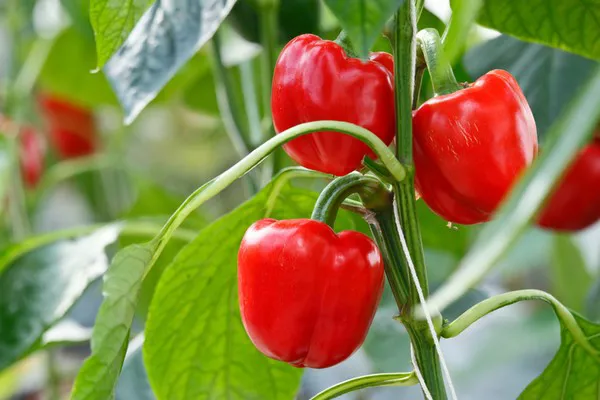Bell peppers consistently rank as one of the most popular vegetables eaten in the United States. Other peppers, including sweet types and spicy ones, such as green chiles, are popular as well. According to USDA’s National Agricultural Statistics Service, U.S. producers harvested more than 31,000 acres of bell peppers and more than 10,000 acres of chile peppers in 2021, with a combined production value of more than $536 million.
NIFA-supported research at the nation’s Land-grant Institutions and other universities and colleges is focused on the challenges producers face, including insect, weed, and disease management; mechanical harvesting challenges; irrigation and water management; and processing safety. Additionally, researchers are working on breeding new varieties of both sweet and chile peppers that will enhance producers’ options at planting time.

© Iamtkb | Dreamstime.com
Here are just a few of the projects underway that are ensuring plenty of peppers for everyone to enjoy.
- The Soilborne Disease Research Program at New Mexico State University (NMSU) provides producers with vital information and new tools for managing soilborne diseases in chile peppers and other crops. Their work better prepares producers to gauge the threat from new diseases and employ appropriate management options to protect and increase production in the state. NMSU researchers are also focusing on breeding New Mexico green chile varieties that can be mechanically harvested. Research has also been conducted to identify optimum equipment and production protocols. Success in these efforts is expected to spur the mechanization of green chile harvesting and reverse the decline of chile crop acreage in the state.
- At North Carolina A&T University, researchers are investigating how to manage brown marmorated stink bugs (BMSB) on peppers and other vegetables. They are studying the biochemical reasons influencing BMSB attraction to bell peppers, cowpeas, sunflowers, and soybeans. Also, they worked to identify a crop highly preferred by BMSB that could be used as a trap crop for the insect pest.
- Scientists at Cornell University developed and released five new bell pepper varieties. The varieties were developed specifically for production in high tunnels in the Northeast. These breeding lines are being shared with organic vegetable seed companies based in the Northeast to be distributed commercially to benefit regional growers.
For more information:  National Institute of Food and Agriculture
National Institute of Food and Agriculture
U.S. Department of Agriculture
+1 202 720 2791
www.nifa.usda.gov
